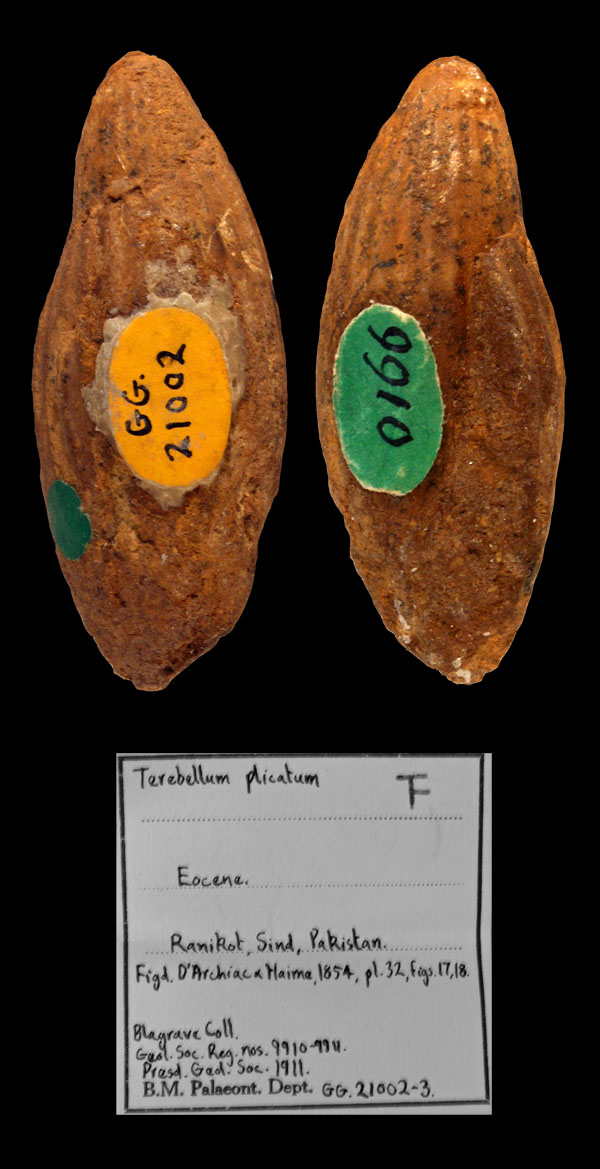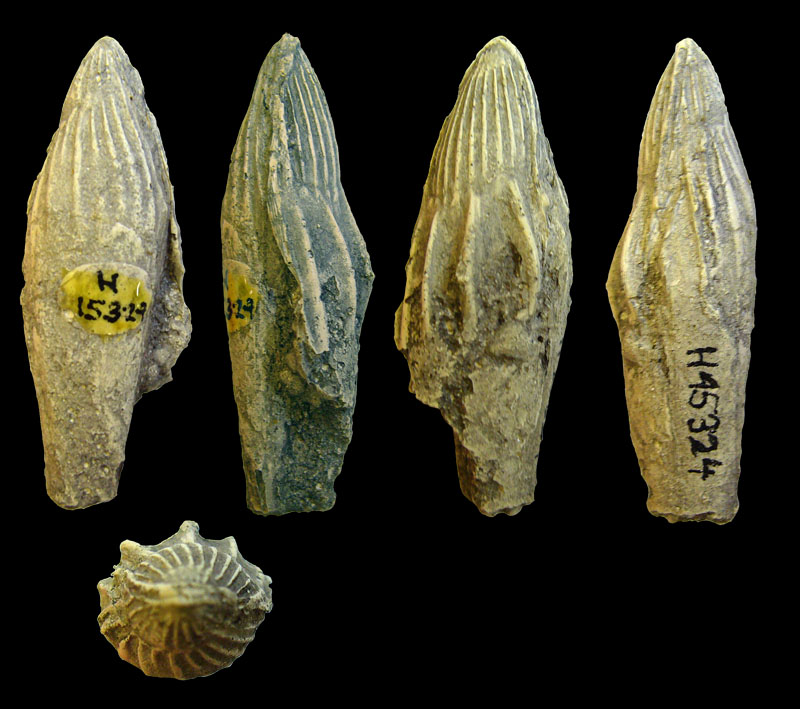Stromboidea
Terebellum plicatum (d'Archiac & Haime, 1854); Holotypes; Eocene; Ranikot, Sindh Province, Pakistan; Coll. BM(NH) no. G.21002; Copyright BM(NH)
History and Synonymy
1909
Description of Terebellum (Mauryna) plicatum d’Archiac & Haime, 1853 by Cossmann & Pissarro, 1909:
- “Large; elongated, somewhat ventricose towards the posterior third; spire concealed; body-whorl constituting the whole shell, ornamented with straight oblique ribs, prominent and widely spaced, abruptly interrupted at half the height of the shell; outer lip forming a channel which is produced up to the apex, but does not seem to be continued on the opposite side. In a few individuals the sutures are distinctly visible. When this occurs, the dorsal ribs of the body-whorl are thicker than those of the previous whorls, and two or three times further apart.”
- “Occurrence. - Upper Ranikot: upper beds of zone 3, Jhirak; zone 4, hilly ground north by east of Petiani, below the big scarp of white limestones, north-west of Kotri, Jhirak lesft bank of Indus opposite Jhirak. ”
Comments by Cossmann & Pissarro, 1909, p. 51:
- “Remarks. - This fossil is as extraordinarily abundant in the upper zones of the upper Ranikot as Clyptrophorus indicus in the lower zones of this sub-division. Instead of the immature casts figured by d’Archiac and Haime, we have been able to study specimens with the shell preserved, reaching the maximum size, and showing the coarse ribs of the body-whorl, with which these authors were unacquainted. This species is the original of the section of Mauryna, de Gregorio (1880), and the present specimens enable us to complete its diagnosis: hitherto there had remained some doubt concerning the existence of the channel connected with the outer lip, extending up to the summit, and whose external edge gives rise to the axial folds at each interruption of growth. It is now evident that this disposition indicates a close relationship to Semiterebellum and confirms the subgeneric distinctness of Mauryna, at least relativly to Terebellum, sensu stricto. The Indian species is much narrower and much more elongated than T. pliciferum Bayan, from the Priabonian of Venetia.”
Specimens from institutional collections
Mauryna plicata (d'Archiac & Haime, 1854); upper Ranikot beds, late Paleocene; Sindh Province, Pakistan; 51 mm; Coll. Naturhistorisches Museum Basel no. H15324 (cast of BM(NH) GG21015); Photo Virgilio Liverani
References


